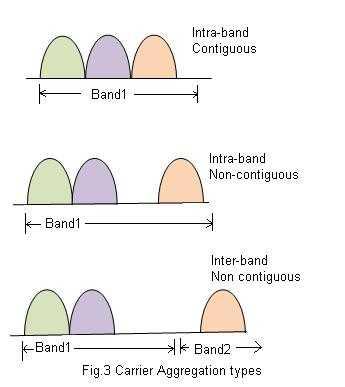Spectrum Management in 4G LTE and 5G NR Networks
Advertisement
Spectrum management is the process of regulating and coordinating the use of the electromagnetic spectrum to avoid interference and ensure efficient utilization of this finite resource. It involves planning, allocating, assigning, and monitoring spectrum usage to optimize communication services for various users and applications.
The spectrum management can be applied to cellular wireless networks which include 2G GSM, 3G UMTS, 4G LTE, 5G NR (New Radio), 6G and so on. Let us understand benefits and limitations of it with respect to 4G and 5G.
Benefits of Spectrum Management
Following are the merits or benefits of spectrum management:
- Proper management ensures that the spectrum is used efficiently, minimizing waste and maximizing the availability of frequencies for various services.
- By coordinating spectrum use, interference between different services is minimized, leading to better quality and reliability of communication.
- Spectrum management facilitates the deployment of new technologies and services, improving overall connectivity and communication capabilities.
- Efficient spectrum management can drive economic growth by enabling new technologies and services, fostering innovation and generating revenue through spectrum auctions and licenses.
- Ensuring reliable communication for emergency services and defense is critical, and effective spectrum management supports these essential functions.

Use case # 1 : 4G LTE Spectrum
4G LTE (Long Term Evolution) utilizes a range of frequency bands allocated specifically for its use. In order to have effective spectrum management in 4G LTE, following features have been introduced.
- Frequency Reuse: Allocating frequencies in a way that allows multiple cells to use the same frequencies without causing interference.
- Spectrum Refarming: Reallocating existing spectrum from older technologies (like 2G/3G) to 4G LTE to improve efficiency and service quality. The figure-2 depicts the same.
- Carrier Aggregation: Combining multiple spectrum bands to increase bandwidth and improve data rates for users.

Due to above features, 4G LTE network support increased data rates, better coverage and improved network capacity (i.e. more users).
Use case # 2 : 5G NR (New Radio) Spectrum
5G NR (New Radio) is the global standard for 5G networks and utilizes a wider range of frequencies, including both sub-6 GHz bands and mmWave bands. To have effective spectrum management following features are introduced in 5G NR.
- Dynamic Spectrum Sharing (DSS): Allows 4G and 5G to share the same spectrum dynamically, facilitating a smooth transition and better utilization. The figure-3 depicts the same.
- Millimeter Wave (mmWave) Utilization: Allocating higher frequency bands (above 24 GHz) for ultra-fast data rates and low latency.
- Flexible Numerology: Different subcarrier spacing and bandwidths can be adapted based on the service requirements and available spectrum.

The mmWave bands provide extremely high data speeds, essential for applications like virtual reality and high-definition streaming. Moreover, efficient spectrum management ensures minimal delay. 5G NR supports a large number of connected devices, crucial for the Internet of Things (IoT) and smart cities. Flexible spectrum usage and advanced techniques like beamforming improve network capacity and coverage.
Limitations of Spectrum Management
Following are the limitations of spectrum management.
- Spectrum management involves complex regulatory frameworks that vary by country and region. Coordinating these regulations to ensure global harmonization and compatibility can be challenging.
- Rapid technological advancements, such as the transition from 4G to 5G, require continuous updates to spectrum management policies and practices. Keeping up with these changes can be demanding and resource-intensive.
- Reallocating spectrum from older technologies (e.g., 2G/3G) to newer ones (e.g., 4G/5G) can be difficult due to the need to balance legacy services with modern requirements.
- Economic and Political Factors: Spectrum management decisions can be influenced by economic and political considerations, such as revenue generation from spectrum auctions or lobbying by stakeholders. These factors can sometimes lead to suboptimal allocation and usage of the spectrum.
- Cross-Border Coordination: Managing spectrum across borders involves international cooperation and coordination. Differences in policies, regulations, and usage patterns can lead to challenges in harmonizing spectrum use globally.
- Cost and Investment: Implementing efficient spectrum management practices and deploying new technologies often require significant financial investment. This can be a barrier for smaller operators or developing countries with limited resources.
Conclusion
Effective spectrum management is crucial for optimizing the performance and efficiency of wireless communication systems. In the context of 4G LTE and 5G NR, it enables higher data rates, improved coverage, reduced interference and supports the deployment of innovative applications and services.
Advertisement
 RF
RF
